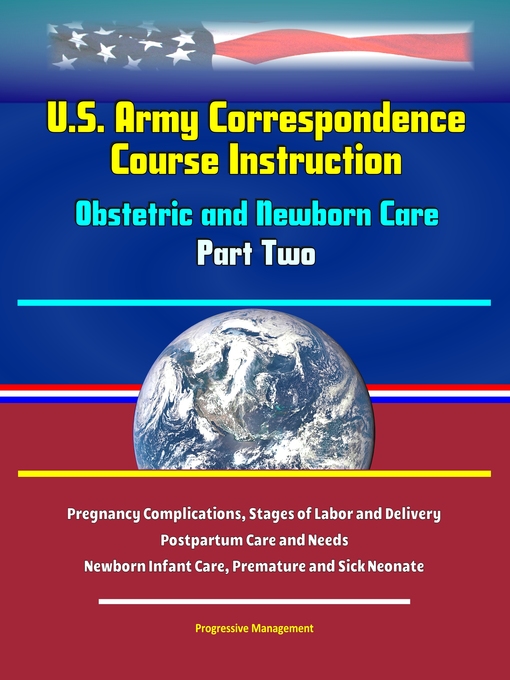Professionally converted for accurate flowing-text e-book format reproduction, this is a reproduction of a U.S. Army Correspondence Course Instruction: Obstetric and Newborn Care - Part Two.
Contents: Introduction * Lesson 1 - Complications of Pregnancy * Lesson 2 - Stages of Labor and Nursing Care * Lesson 3 - Precipitate and Emergency Delivery * Lesson 4 - Management of Obstetric Discomfort During Labor * Lesson 5 - Special Situations in Labor And Delivery * Lesson 6 - The Postpartal Patient * Lesson 7 - Characteristics of the Typical Newborn Infant * Lesson 8 - Care of The Normal Newborn Infant * Lesson 9 - Newborn Nutrition * Lesson 10 - The Premature Infant * Lesson 11 - The Sick Neonate
Subcourse MD0922, Obstetric and Newborn Care II, is a continuation from Subcourse MD0921, Obstetric and Newborn Care I. This subcourse will further explain the many physiological and psychological changes that a woman may experience throughout her pregnancy, during labor and delivery, and the period after delivery. The practical nurse, along with other members of the nursing staff, have a great responsibility of teaching and providing quality nursing care for the health and well-being of the mother and the newborn.
Being aware of conditions that can cause complications in pregnant women will be an asset to you, as a practical nurse, in your knowledge and skills in providing care to the patient. Complications of pregnancy can be an emotional crisis to a patient and her support person. Prenatal care allows for early identification and management of a patient with complications.
The goal of any mother and health care team is the successful, uncomplicated birth of a new infant. Your understanding of the process of labor and what it entails will allow you to provide adequate comfort measures to the patient and to assist her through this long awaited event. Although much pain or discomfort may be experienced by the mother and those concerned, labor and delivery of an infant is an eventful time after a long nine months of pregnancy. Labor is defined as the onset of rhythmic contractions and the relaxation of the uterine smooth muscles which results in effacement or progressive thinning of the cervix, and dilation or widening of the cervix. This process culminates with the expulsion of the fetus and expulsion of the other products of conception (placenta and membranes) from the uterus.
